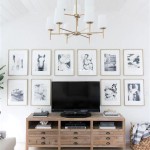Daycare Baby Room Decorating Ideas
Creating a welcoming and stimulating environment for infants in a daycare setting is paramount. A well-designed baby room not only provides a safe and comfortable space for infants but also promotes their cognitive, social, and emotional development. This article explores a range of decorating ideas that can transform a daycare baby room into a vibrant, engaging, and developmental learning hub.
Prioritizing Safety and Comfort
Safety and comfort are at the forefront of any daycare baby room design. This means selecting materials and furniture that are non-toxic, durable, and easy to clean. Soft, cushioned play mats and area rugs provide a safe landing spot for active babies, while brightly colored, washable curtains add a splash of color and reduce glare. Consider using furniture with rounded edges to prevent injuries, and ensure all electrical cords are properly secured. Additionally, proper ventilation and temperature control are essential for infant well-being.
Decorating with soft, calming hues like pastels and neutrals can create a soothing atmosphere. Consider incorporating natural elements, such as wooden toys or a small indoor plant, to introduce babies to the beauty of nature. Soft lighting, both natural and artificial, should be used to avoid harsh shadows and promote a comfortable sleep environment. In addition to visual elements, auditory stimuli can also create a calming atmosphere. Soft, gentle music or nature sounds can promote relaxation and a sense of security.
Stimulating Sensory Development
Infants learn best through sensory exploration. A well-designed baby room provides ample opportunities for visual, auditory, tactile, and olfactory stimulation. Brightly colored mobiles and wall decorations catch the eye and spark curiosity. Soft, textured toys encourage exploration and fine motor development. A variety of musical instruments, such as rattles and bells, can provide auditory stimulation and promote language development. Introduce different scents, like lavender or chamomile, to stimulate olfactory senses and create a calming experience. Additionally, consider incorporating sensory bins filled with safe materials, such as soft fabrics or textured balls, to foster tactile exploration.
Creating multiple play areas, such as a tummy time zone, a reading nook, and a sensory exploration area, allows babies to engage in different activities. For tummy time, provide a soft, padded mat with interesting visuals and textures. A cozy reading nook with soft seating and age-appropriate books encourages bonding and language development. A designated sensory exploration area with a variety of materials like textured blocks, mirrors, and soft toys can stimulate different senses and promote cognitive development.
Encouraging Social Interaction and Play
Babies thrive on interaction and social play. A well-designed baby room encourages interaction and collaboration. Providing comfortable seating areas for caregivers and parents promotes bonding and communication. Ensure there is enough space for babies to crawl, walk, and interact with each other. Incorporate age-appropriate toys that encourage sharing and social play, such as soft blocks or stacking rings. Consider including a small play kitchen or a dollhouse to facilitate imaginative play. Additionally, providing opportunities for babies to interact with familiar objects from their homes, such as stuffed animals or blankets, can create a sense of comfort and security.
Open communication is crucial for creating a strong bond between caregivers, parents, and babies. Encourage parents to share their child's interests and preferences with caregivers. This information can be used to personalize the room and create a more stimulating and engaging environment for the baby. Regularly rotate toys and activities to keep the room fresh and engaging. This will help to prevent boredom and encourage exploration. Additionally, consider incorporating a "parent board" where caregivers can share information about their daily activities and milestones.
Creating a Sense of Belonging
A daycare baby room can be more than just a space for care; it can be a place where infants feel a sense of belonging and security. One way to establish this sense of belonging is through personalized touches. Include each baby's name and photo on their individual cubby or crib. Encourage caregivers to incorporate babies' favorite colors, themes, and objects into the room's decor. This helps create a sense of familiarity and comfort for the infants.
When incorporating personalized touches, it is essential to respect cultural diversity and individual preferences. Encourage caregivers to be mindful of the cultural backgrounds of the children in their care. They should avoid using stereotypes or assumptions about specific cultures. Instead, they should strive to create an inclusive environment that celebrates the unique characteristics of each child. Additionally, caregivers should be sensitive to the individual needs and preferences of each child. This might involve providing a specific type of toy, offering comfort through a particular activity, or adjusting the lighting to match the child's individual requirements.

Pin On Prek

Infant Daycare Decorating Ideas House Design Decor Interior Layout Furnitures
Daycare Ideas Interior Design Inspiration For Your Childcare Center

Daycare Ideas Interior Design Inspiration For Your Childcare Center

Decorating Home Daycare Ideas

Daycare Ideas An Ideabook By Kellbell100

Daycare Ideas Interior Design Inspiration For Your Childcare Center Decor Setup

Daycare Ideas Interior Design Inspiration For Your Childcare Center

Infant Room Daycare Classroom Decor

Oh The Places You Ll Go Playroom Project Nursery







